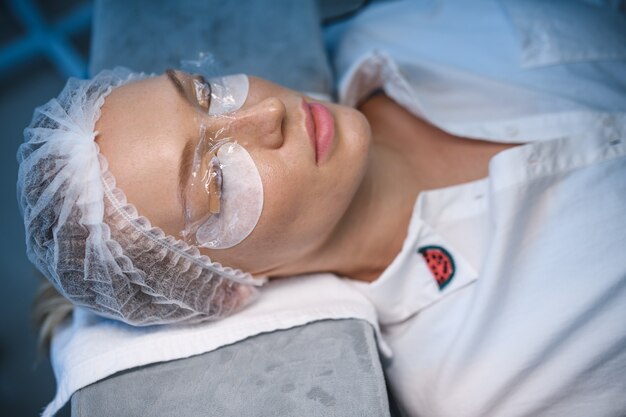What To Expect After Cataract Surgery: Common Post-Op Challenges and Solutions
Cataract surgery is a common procedure that helps restore vision impaired by cloudy lenses. Most patients experience significant improvement, yet like any surgery, it comes with its own set of post-operative challenges. Understanding these can help manage expectations and navigate the recovery process with confidence.
Understanding Cataract Surgery
Cataract surgery involves removing the clouded lens of the eye and replacing it with an artificial lens. It's typically an outpatient procedure, meaning you won't have to stay overnight in a medical facility. The prospect of regaining clear vision is exciting, but recovery may involve a few bumps along the way.
The Road to Recovery
Immediately after surgery, many people experience blurred vision. It's important to recognize that this is generally a normal part of the healing process as the eye adjusts to the new lens. Your vision is expected to gradually improve over a few days or weeks.
Common Problems Experienced After Cataract Surgery
Let's delve into some of the more frequent post-operative issues.
1. Blurred Vision
Blurred vision is perhaps the most commonly experienced issue following cataract surgery. Initial blurriness can result from the eye adjusting to the new lens.
Managing Expectations: While the eye recovers and adjusts, activities like reading or watching television can seem challenging. Keep patient, as vision typically improves within a few days.
2. Dry Eye and Discomfort
Dry eyes occur due to reduced tear production following cataract surgery, causing discomfort and irritation.
Solutions:
- Use artificial tears as recommended by your healthcare provider to keep the eyes lubricated.
- Avoid rubbing your eyes, which can exacerbate dryness and hinder recovery.
3. Light Sensitivity
Light sensitivity or photophobia is another common issue. It's a temporary condition resulting from eye adjustments post-surgery.
Tips:
- Wearing sunglasses when outdoors can help alleviate discomfort from bright lights.
- Indoor lights can also be dimmed to ease sensitivity.
4. Glare and Halos
Patients may notice glare and halos around lights, especially at night, due to adjustments in the eye’s lens.
Practical Steps:
- Try using anti-glare glasses to reduce the impact.
- While these symptoms typically improve over time, it's advised to avoid hazardous activities like night driving until vision stabilizes.
5. Floaters
Eye floaters can appear as small specks in vision due to debris within the eye's vitreous humor. This is relatively common and usually not of major concern unless accompanied by flashes of light or a sudden increase in floaters.
Recommendations:
- If floaters persist or worsen, consult a healthcare provider to rule out retinal issues.
Less Common Complications
Though rare, some individuals may encounter more serious complications.
1. Infection and Inflammation
Infection, though uncommon, can occur post-surgery, leading to pain, redness, and swelling.
Preventive Measures:
- Follow prescribed eye drop schedules to lower infection risk.
- Report any unusual symptoms to your doctor immediately.
2. Posterior Capsule Opacification (PCO)
Over time, some might develop Posterior Capsule Opacification, where the lens capsule becomes cloudy.
Resolution:
- A minor laser procedure, known as YAG laser capsulotomy, is often effective in clearing this cloudiness.
3. Retinal Detachment
Retinal detachment is a rare but serious complication that requires prompt attention.
Warning Signs:
- Pay attention to sudden flashes of light or a curtain-like shadow moving across your vision.
- Seek immediate medical assistance if such symptoms occur.
Tips for Smooth Recovery
To ensure a smooth recovery, consider these practical guidelines:
- Stick to Follow-up Appointments: Regular check-ups help track healing progress and catch any complications early.
- Protect Your Eyes: Use provided eye shields at night and protective sunglasses during the day.
- Avoid Strenuous Activities: Limit heavy lifting and bending to promote optimal healing.
- Maintain Proper Hygiene: Keep hands clean and avoid touching the eye area to prevent infections.
Quick Tips for Post-Surgery Care 🏥
- 🚫 Avoid dusty environments to minimize eye irritation.
- 💧 Administer prescribed eye drops consistently as they're crucial for healing.
- 🗓️ Note any significant changes in vision post-surgery and report them.
- 😴 Prioritize rest and sleep to aid recovery.
Seeking Professional Guidance
Consulting your eye care professional can provide personalized insights tailored to your specific recovery needs. Professional guidance is invaluable in navigating any complexities post-surgery.
Summarized Insights
- Initial blurriness is typical, but improvements usually follow within days.
- Light sensitivity and halos are normal, often settling over time.
- Proactively use lubricating drops to mitigate dry eyes.
- Abnormal symptoms deserve prompt medical attention for peace of mind.
When navigating recovery after cataract surgery, informed awareness is vital. Knowing what to expect equips you with the understanding and patience needed for a smooth journey back to crisp, clear vision. Always prioritize clarity when communicating symptoms with your healthcare provider. 📝
